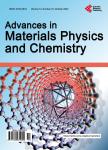ArcGIS<sup>TM</sup>Proximity and Cluster Analysis of Electron Probe Micro-Maps of Round Top Critical Mineral Deposit
ArcGIS<sup>TM</sup>Proximity and Cluster Analysis of Electron Probe Micro-Maps of Round Top Critical Mineral Deposit作者机构:Department of Geological Sciences The University of Texas at El Paso El Paso Texas USA School of Nursing The University of Texas at El Paso El Paso Texas USA Texas Mineral Resources Corporation Sierra Blanca Texas USA
出 版 物:《Advances in Materials Physics and Chemistry》 (材料物理与化学进展(英文))
年 卷 期:2020年第10卷第3期
页 面:63-76页
学科分类:0709[理学-地质学] 070901[理学-矿物学、岩石学、矿床学] 07[理学]
主 题:ArcGISTM EPMA Proximity Ripley’s K-Function Critical Minerals Yttro-fluorite Round Top Deposit
摘 要:Critical and rare earth elements are in high demand for their increasing incorporation in modern technological devices for applications in the military, industrial, commercial, and consumer sectors. Round Top Mountain, a rhyolite laccolith in Sierra Blanca, west Texas, U.S.A. is a unique mineral deposit that offers opportunity for development of rare earth elements, especially the heavy rare earths, as well as associated critical elements. The main objective here is to evaluate the distances between accessory minerals of potential economic value (yttrofluorite, cryolite, uraninite, thorite, cassiterite, and columbite), and to major (potassium feldspar, albite, and quartz) and minor minerals (annite mi-ca, magnetite, and zircon). In this study we explore the proximity and clustering of these minor and accessory minerals, at the mi-cron-to-millimeter scale, from mineral maps constructed in a previous application of ArcGISTM tools to electron probe microanal-ysis (EPMA) element maps. Our goal is to determine whether specific minerals cluster spatially and, if so, at what distances. We noted that the high-value target yttrofluorite grains often neighbor potassium feldspar and quartz grains, but less commonly magnetite and mica grains. With regard to cluster analysis, most minor and accessory minerals were found to group together at small scales (low micrometer) and were dis-persed or random at larger (up to 1 mm) distances.




